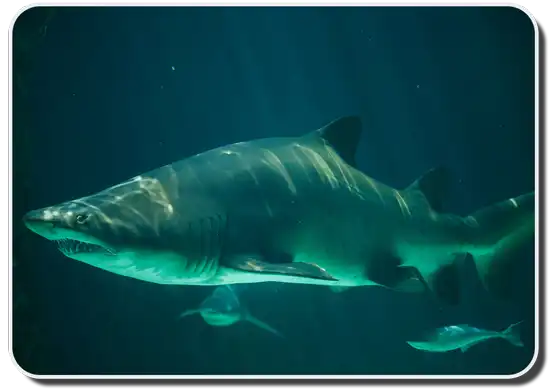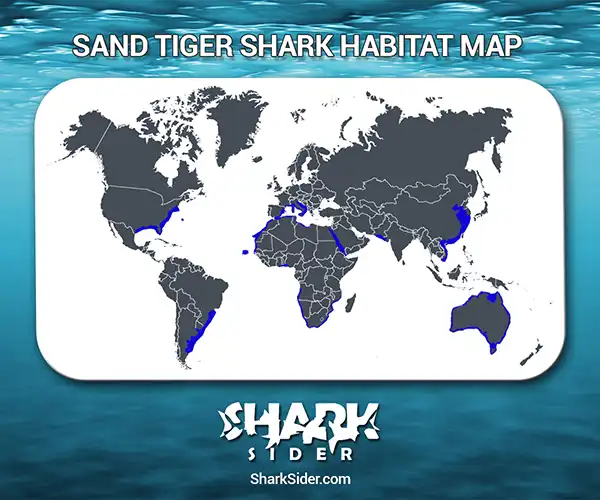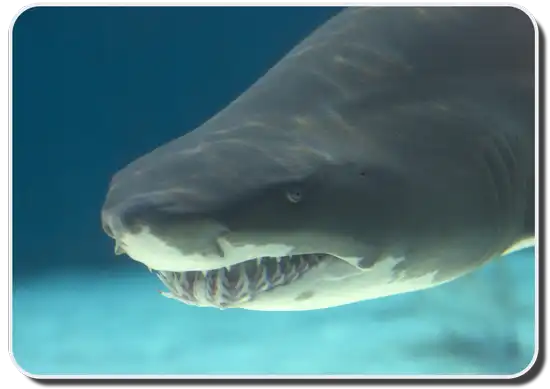The Sand Shark is also known as the Sand Tiger Shark (US and UK), the Grey Nurse Shark (Australia) and Ragged Tooth Shark (Africa). In the scientific community it’s known as the Carcharias Taurus. The “sand” portion of its name comes from the shark being seen around shallow waters and close to shore.
The dangerous appearance of this creature has given them a bad reputation, but in reality, they are quite peaceful and relatively harmless unless provoked.

This special shark grows up to 3.2 meters (10.5ft) and adults can weigh around 200 Kilograms (440lbs). Both sexes only live about 7 years and due to their ability to live in captivity, many spend their lives in public shark aquariums.
Video Of The Sand Tiger Sharks
Habitat
Map Of The Sand Tiger Shark’s Habitat

Sensory System
As with all other shark species, they have a special sense of feeling. By using an organ called the ampullae of Lorenzini, they can sense electronic impulses that all living creatures emit.
Hunting Behavior
The Tiger Shark has a very unique hunting strategy. They are able to gulp air from above the surface and collect the air in their stomachs. This enables them to become buoyant and approach their prey virtually motionless.
During the Day, the Tiger stays mostly inactive. But at night, the real hunt begins.

Social Behavior
In general, these sharks are free thinkers and fend for themselves. But at times, they can be found in groups of 20 or more.
Offspring
These sharks are Ovoviviparous which means they eggs evolve in the uterus until birth. The pregnancy period lasts from 9 months to 1 year and females give birth during the winter months. This is very unusual for sharks.
Unlike most shark species, the Sand Shark only gives birth to 1 to 2 live pups at once. Because of this, they have the lowest reproduction rate of all sharks.

Relationship with Humans
This shark is classified as a “species of concern” by the National oceanic and Atmospheric Administration Fisheries Service. A low reproductive rate combined with a high level of commercial and sport fishing has depleted the population of this beautiful species.
There is very little concern for attacks on humans from this shark. There are no unprovoked attacks from this shark on record. They are generally very gentle and attempt to avoid conflict with humans.
